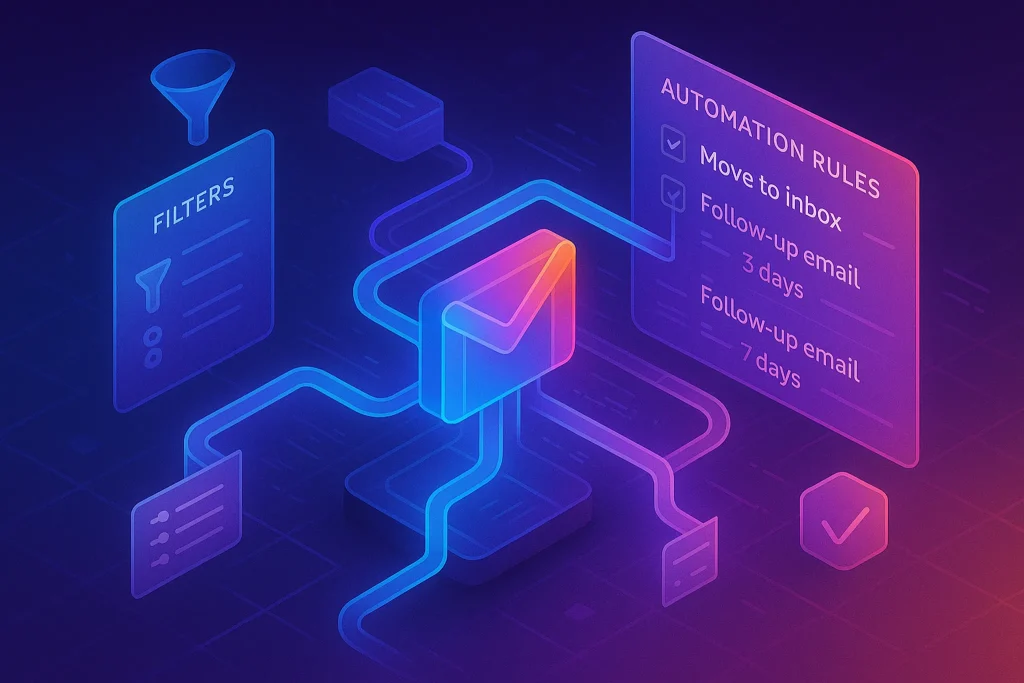🎯 Why Tracking Expenses in Google Sheets Still Matters in 2025
Managing money has never been easy, and with digital payments, subscriptions, and multiple income streams, it’s even harder to know where your money is going. Many people jump into expensive finance apps or try complicated accounting software, only to realize that what they really need is a simple, flexible, and free solution. That’s exactly where Google Sheets shines.
Unlike static budgeting templates, Google Sheets gives you full control over how you categorize, calculate, and visualize your spending. It syncs seamlessly across devices, integrates with other Google Workspace tools, and—if you’re willing to take advantage of add-ons—can even connect with your bank or payment processors. Whether you’re a student trying to track monthly expenses, a freelancer keeping business costs in check, or a family budgeting for the year, a well-built expense tracker in Sheets can replace apps that cost hundreds of dollars annually.
In fact, many startups and solo entrepreneurs already rely on Google Sheets instead of enterprise systems. Just as creators automate their workflows with tools like Pro Tips for Automating Your Entire Content Workflow, individuals are automating their finances in Sheets. Done right, this method combines transparency, control, and affordability in one place.
🛠️ Step 1: Setting Up Categories That Work for You
Before you can start tracking numbers, you need structure. Expense categories are the backbone of your budget—they tell you not just how much you’re spending, but where your money is really going.
Start by creating clear, high-level categories such as Income, Fixed Costs, and Variable Costs. Fixed costs could include rent, insurance, or subscriptions that rarely change, while variable costs cover things like groceries, dining out, and entertainment. Under each of these, you can add subcategories for deeper insights. For example, “Food” can be broken down into “Groceries” and “Restaurants.”
The goal here isn’t complexity but clarity. Too many categories make your sheet overwhelming, but too few leave you blind to problem areas. By striking the right balance, you make your spreadsheet actionable. Imagine seeing that 40% of your “Variable Costs” are just dining out—you instantly know where to cut back.
This approach works beautifully when combined with automation. Later, if you integrate add-ons like Tiller Money or Sheetgo, expenses can be automatically tagged into the right category. This way, you start your tracking manually but eventually scale it into a semi-automated system, similar to how you might set up Automatic Reporting Dashboards Without a Developer.
🧩 Real Use Cases by Persona
One of the reasons Google Sheets works so well as an expense tracker is its adaptability to different lifestyles. For example, a freelancer can use it to log project-based costs like software subscriptions, travel, or client lunches, then compare those against invoices. A family might categorize expenses into “Fixed” (rent, utilities, insurance) and “Variable” (groceries, entertainment) to quickly see where money leaks. Even a student or traveler can rely on Sheets to track daily spending, separating meals, transport, and activities to avoid overshooting budgets. By building personas into your tracker, you make the sheet more intuitive and practical for real-world use.
🛠️ Step 2: Using Formulas to Do the Heavy Lifting
Google Sheets formulas transform a simple expense table into a dynamic financial dashboard. At a basic level, functions like SUM allow you to quickly total up categories for the month. But once you master QUERY, FILTER, and ARRAYFORMULA, your expense tracker becomes much smarter.
For example, you could use =SUMIF(Category, "Groceries", Amount) to automatically total grocery expenses, or build a QUERY that shows all expenses above $100. Conditional formulas let you build budgets within budgets, highlighting not just totals but trends.
The real magic comes when you link formulas to charts. Imagine having a pie chart that updates instantly whenever you add a new transaction. You get real-time insights without having to manually calculate every month. This feature is often the biggest reason people abandon apps like Notion or Excel for Google Sheets—it’s both powerful and cloud-synced.
As your sheet grows, you’ll appreciate how formulas scale. A single well-written formula can replace dozens of manual calculations, just as Automating Email Replies in Gmail saves hours of inbox time.
✅ Data Validation & Drop-Downs
Manual typing often leads to inconsistent categories (“Food,” “food,” “Groceries”). With Google Sheets’ Data Validation feature, you can create drop-down menus for categories, payment methods, or vendors. This not only reduces human error but also ensures cleaner data for analysis later. A structured drop-down list also makes your expense tracker look professional and keeps reports more accurate, since you don’t waste time cleaning inconsistent entries.
🛠️ Step 3: Using Conditional Formatting to Flag Overspending
Numbers are helpful, but visuals are what really catch your attention. That’s where conditional formatting steps in. Instead of just seeing that you spent $700 on dining out, your cell turns bright red the moment you exceed your set budget.
You can configure Google Sheets to automatically highlight overspending, warn you when income doesn’t meet expected levels, or even turn categories green when you’re under budget. This simple automation ensures you don’t overlook financial red flags.
For families, this feature becomes especially useful. Imagine a shared sheet where everyone logs expenses—the conditional formatting instantly shows if the family budget for “Entertainment” has already been maxed out. No more awkward surprises at the end of the month.
Conditional formatting is also what makes Google Sheets competitive with dedicated apps. Many budgeting tools lock such features behind paywalls, but here you design the system yourself, no limits. It’s as customizable as setting up Google Drive Organization Automation tailored to your workflow.
👥 Sharing & Collaboration Best Practices
If you’re managing shared expenses with a spouse, roommates, or a small team, Sheets’ collaboration features are invaluable. You can control access levels—View Only for those who just need to see numbers, or Editor for trusted contributors. It’s also smart to use Protected Ranges, which lock important formulas or summary cells while still allowing input in designated rows. This ensures that no one accidentally breaks the tracker, while still keeping collaboration fluid and transparent.
🛠️ Step 4: Adding Charts for Clear Insights
Data without visualization is overwhelming. By turning your expense tracker into charts—line graphs for monthly trends, bar charts for category comparisons, pie charts for distribution—you transform your budget into something instantly understandable.
A great approach is to build a monthly expense dashboard inside your sheet. This dashboard could include a line chart showing spending growth over months, a bar chart comparing income vs. expenses, and a pie chart breaking down where money goes. Once set up, these visuals update automatically every time you enter new data.
This is particularly helpful for freelancers or digital nomads who need to present simple financial summaries to accountants or even clients. Instead of sending over raw sheets, you can provide a visual snapshot that communicates insights at a glance. It’s like building a lightweight BI tool directly in Google Sheets, similar in spirit to those automatic dashboards mentioned earlier.
The simplicity of having your finances visualized is powerful—it helps you not only see numbers but also feel their impact. That’s why so many professionals still prefer Google Sheets for personal finance, despite the dozens of flashy fintech apps on the market.
📱 Mobile Tracking Workflow
Expense tracking only works if you log costs consistently. Since most spending happens on the go, using the Google Sheets mobile app or pairing it with Google Forms can save time. Imagine a form on your phone where you quickly input “Lunch $12 – Card” and it instantly feeds into your main tracker. This workflow is especially useful for people who want to record every transaction in real time without fumbling with complex spreadsheets during the day.
🛠️ Step 5: Automating Imports with Add-ons
Manual entry works fine for beginners, but at some point you’ll want to automate. Add-ons like Tiller Money, Sheetgo, and Coupler.io allow you to pull transactions directly from your bank, PayPal, or business accounts into Google Sheets. This step takes your tracker from a hobbyist tool to a professional-grade system.
Tiller Money, for example, automatically imports daily transactions, categorizes them, and even provides pre-built templates. Sheetgo is excellent for linking multiple sheets—say, business and personal accounts—into one master tracker. Coupler.io shines when you want to connect Sheets with other apps like QuickBooks or HubSpot.
This automation not only saves time but also reduces errors. Instead of worrying about forgetting to log a purchase, your sheet does the heavy lifting in the background. It’s the same principle that powers Automating Invoice Creation and Payment Reminders: once automation takes over, you free yourself to focus on decisions instead of data entry.
📊 Integration with Looker Studio (Data Studio)
For power users who want more than just tables and charts inside Sheets, linking your tracker to Looker Studio can transform it into a professional-grade financial dashboard. You’ll be able to create interactive reports, visualize monthly burn rates, and compare spending across years with sleek charts. This integration is particularly useful for small business owners who want to present polished financial overviews to clients, investors, or partners.
📊 Sheets vs. Excel vs. Notion
Google Sheets: Cloud-based, free, real-time collaboration, works across all devices, integrates with automation add-ons.
Excel: Extremely powerful formulas, better for offline users, but lacks free collaboration and requires licenses.
Notion: Beautiful interface and integrations, but weak formula support and limited automation for financial tracking.
When comparing, most personal users find Google Sheets the sweet spot. For small businesses, Excel still shines in advanced analytics, while Notion is better suited for visual project management rather than raw number crunching.
✅ Checklist: 5 Common Mistakes in Expense Tracking with Sheets
-
Creating too many categories and getting lost in complexity.
-
Forgetting to apply consistent formatting, which causes errors.
-
Not backing up data or versioning your sheet.
-
Over-relying on manual entry instead of automating imports.
-
Ignoring charts and visuals, leading to information overload.
🧠 Nerd Picks
👉 Want to save time and make your tracker smarter? Try Tiller Money for daily automated imports into Google Sheets, or use Sheetgo to sync multiple accounts into one dashboard. Both integrate seamlessly and help you skip the boring manual work.
📬 Want More Smart AI & Automation Tips?
Join our free newsletter and get weekly insights on AI tools, no-code apps, and productivity hacks—delivered straight to your inbox.
No fluff. Just high-quality content for creators, solopreneurs, and future builders.
🔐 100% privacy. No spam. Just value-packed insights from NerdChips.
🔐 Security & Privacy Tips
Because an expense tracker contains sensitive information, you should take precautions. Always secure your Google Account with 2FA, avoid editing Sheets over public Wi-Fi, and never set your file to “Public on the web.” If you need to share, limit access to specific emails. These small steps keep your financial data safe while still letting you enjoy the flexibility of a cloud-based tracker.
🧠 Nerd Verdict
If you’re serious about understanding and controlling your money, Google Sheets is one of the most powerful free tools at your disposal. Unlike rigid apps, it grows with you—from simple manual entry to full automation with banking integrations. For individuals, families, and freelancers alike, Sheets isn’t just “good enough”; it’s a smart financial foundation.
❓ FAQ: Nerds Ask, We Answer
💬 Would You Bite?
Do you currently track your expenses in Sheets, or are you still juggling apps and manual notes?
What’s been your biggest struggle with expense tracking so far? 👇



